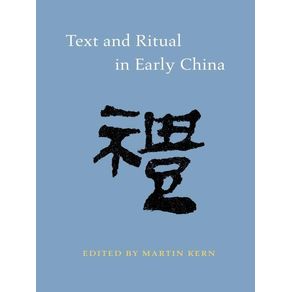In Text and Ritual in Early China, leading scholars of ancient Chinese history, literature, religion, and archaeology consider the presence and use of texts in religious and political ritual. Through balanced attention to both the received literary tradition and the wide range of recently excavated artifacts, manuscripts, and inscriptions, their combined efforts reveal the rich and multilayered interplay of textual composition and ritual performance. Drawn across disciplinary boundaries, the resulting picture illuminates two of the defining features of early Chinese culture and advances new insights into their sumptuous complexity.Beginning with a substantial introduction to the conceptual and thematic issues explored in succeeding chapters, Text and Ritual in Early China is anchored by essays on early Chinese cultural history and ritual display (Michael Nylan) and the nature of its textuality (William G. Boltz). This twofold approach sets the stage for studies of the E Jun Qi metal tallies (Lothar von Falkenhausen), the Gongyang commentary to The Spring and Autumn Annals (Joachim Gentz), the early history of The Book of Odes (Martin Kern), moral remonstration in historiography (David Schaberg), the Liming manuscript text unearthed at Mawangdui (Mark Csikszentmihalyi), and Eastern Han commemorative stele inscriptions (K. E. Brashier).The scholarly originality of these essays rests firmly on their authors control over ancient sources, newly excavated materials, and modern scholarship across all major Sinological languages. The extensive bibliography is in itself a valuable and reliable reference resource.This important work will be required reading for scholars of Chinese history, language, literature, philosophy, religion, art history, and archaeology.

